Mold Flipper: What Training and Safety Basics Matter for Vietnam Operators?
You've invested in a powerful, heavy-duty mold flipper for your facility. It’s a machine that promises to improve efficiency and workflow. But in the back of your mind, there's a nagging concern. The real power isn't just in the machine's hydraulics; it's in the hands of the operator. An untrained operator can turn this incredible asset into a massive liability in a single moment, causing costly damage, catastrophic downtime, and, worst of all, serious injury. This isn't just a hypothetical problem; I've seen it happen. It's a universal challenge for factory owners everywhere, from the bustling industrial parks in Vietnam to the large-scale steel mills in Mexico. The solution isn't just handing over a user manual. It’s about building deep, practical competence and a culture of safety that protects your people, your equipment, and your bottom line.
For operators in Vietnam, the most critical training and safety basics for a mold flipper involve a combination of machine-specific knowledge, routine safety checks, and emergency preparedness. This includes understanding load limits and balancing, performing daily pre-operation inspections of hydraulic and electrical systems, and mastering the use of emergency stops and lockout-tagout procedures to prevent accidents and ensure stable, safe operation.
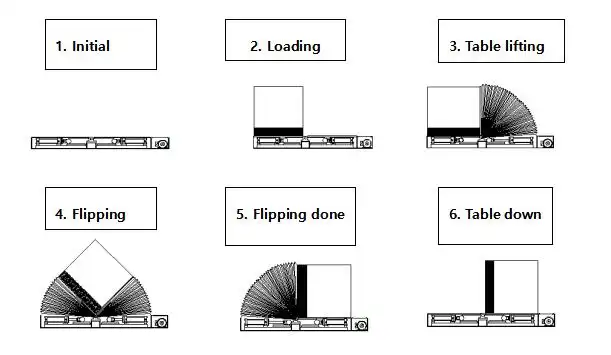
This might sound straightforward, but the devil is always in the details. Knowing what to do is one thing; understanding why you're doing it and making it an unbreakable habit is another entirely. This is the difference between a team that just operates a machine and a team that masters it. As an engineer who has spent his entire career on the factory floor, I've learned that these details are what separate a smooth, profitable operation from one that constantly battles unexpected issues. Let's break down the essential components that form the foundation of a truly effective training and safety program for your mold flipper operators.
Why is hands-on operational training essential for mold flipper safety?
Have you ever handed an operator a technical manual, only to see them make a basic mistake a week later? It’s a common frustration. You assume the information has been absorbed, but reading about a process and physically performing it are two completely different worlds. A manual can't convey the subtle hum of a healthy hydraulic system, the feel of the controls under load, or the visual cues of a perfectly centered mold. This gap between theoretical knowledge and practical skill is precisely where costly and dangerous accidents are born. The only way to bridge this gap is through structured, supervised, hands-on training that builds real-world competence and muscle memory.
Hands-on operational training is essential because it moves beyond theoretical knowledge to build practical skills and muscle memory. It allows operators to safely experience the machine's response to different loads and controls, learn to recognize normal operating sounds and vibrations, and practice emergency procedures in a controlled environment, which drastically reduces the risk of real-world errors.
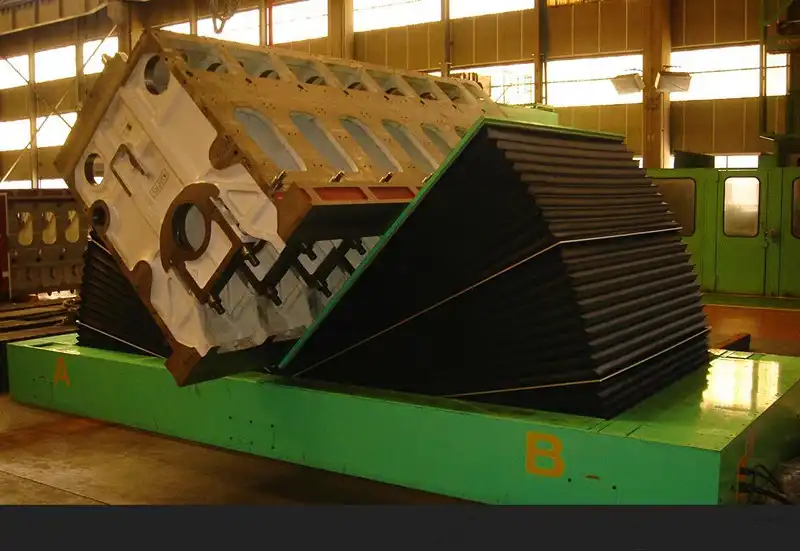
Simply put, you can't learn to ride a bike by reading a book. The same logic applies to heavy industrial machinery. An operator needs to develop an intuitive feel for the equipment. This is where we, as leaders and engineers, must provide the right environment for learning. It’s an investment that pays for itself many times over by preventing a single major incident.
From Theory to Muscle Memory
When an operator reads a manual, they are engaging their cognitive brain. They learn facts: the maximum load capacity, the function of each button, the sequence of operations. This is important, but it's only half the battle. When they are on the factory floor, with production targets looming and other distractions, they need to rely on more than just memory.
Hands-on training builds what I call "machine intuition." It's the ability to know, just by sound and feel, that something isn't right. It's the muscle memory that allows them to react instantly in an emergency without having to stop and think. This comes from repetition in a controlled setting. They need to feel how the machine strains with an off-center load, hear the difference in the hydraulic pump when it's working hard versus when it's running smoothly, and see how the mold settles onto the platform. These sensory inputs are things a manual can never teach but are absolutely vital for safe and efficient operation.
A Structured Approach to Hands-On Training
A successful hands-on program isn't a free-for-all. It needs structure to be effective and safe. I recommend a phased approach that gradually builds an operator's confidence and competence.
| Training Phase | Key Activities | Goal |
|---|---|---|
| Phase 1: Shadowing | The trainee observes an experienced, certified operator for a full shift. They can ask questions but do not touch the controls. | Understand the workflow, safety zones, communication protocols, and the rhythm of the operation. |
| Phase 2: Supervised Operation | The trainee operates the machine under the direct, one-on-one supervision of a mentor. They start with simple, non-critical tasks and gradually move to more complex ones. | Build basic control skills and confidence in a safe environment. The mentor provides real-time feedback and can intervene immediately if needed. |
| Phase 3: Scenario-Based Testing | The mentor creates controlled "problem" scenarios. For example, a simulated E-stop event, a slightly unbalanced load (within safe limits), or a mock hydraulic leak alarm. | Test the operator's problem-solving and emergency response skills. This solidifies their ability to handle unexpected events calmly and correctly. |
When I started my journey as a young engineer, I was paired with a senior mechanic named Chen. He taught me more about machines in three months than any textbook had in four years. He would make me close my eyes and just listen to the equipment, telling me to identify the different sounds. That's the kind of mentorship that builds true experts. This is the experience we must replicate for our operators.
What are the non-negotiable safety protocols for daily mold flipper checks?
When production targets are tight and the pressure is on, it's tempting to cut corners. The first things to get rushed or even skipped are often the pre-operation checks. An operator might think, "It was working fine yesterday, it will be fine today." This is one of the most dangerous assumptions on any factory floor. A single loose bolt, a frayed hydraulic hose, or a malfunctioning safety sensor, missed during a five-minute inspection, can lead to catastrophic failure under a multi-ton load. It's a hidden threat that grows silently until it's too late. The only way to systematically eliminate this risk is to implement a simple, clear, and absolutely non-negotiable daily checklist that becomes a mandatory part of the startup routine.
The non-negotiable safety protocols for daily mold flipper checks include three core areas: mechanical, hydraulic, and electrical. Operators must visually inspect for structural cracks or wear, check hydraulic hoses for leaks and pressure levels, and ensure all electrical connections, safety sensors, and emergency stop buttons are functioning correctly before starting any operation.
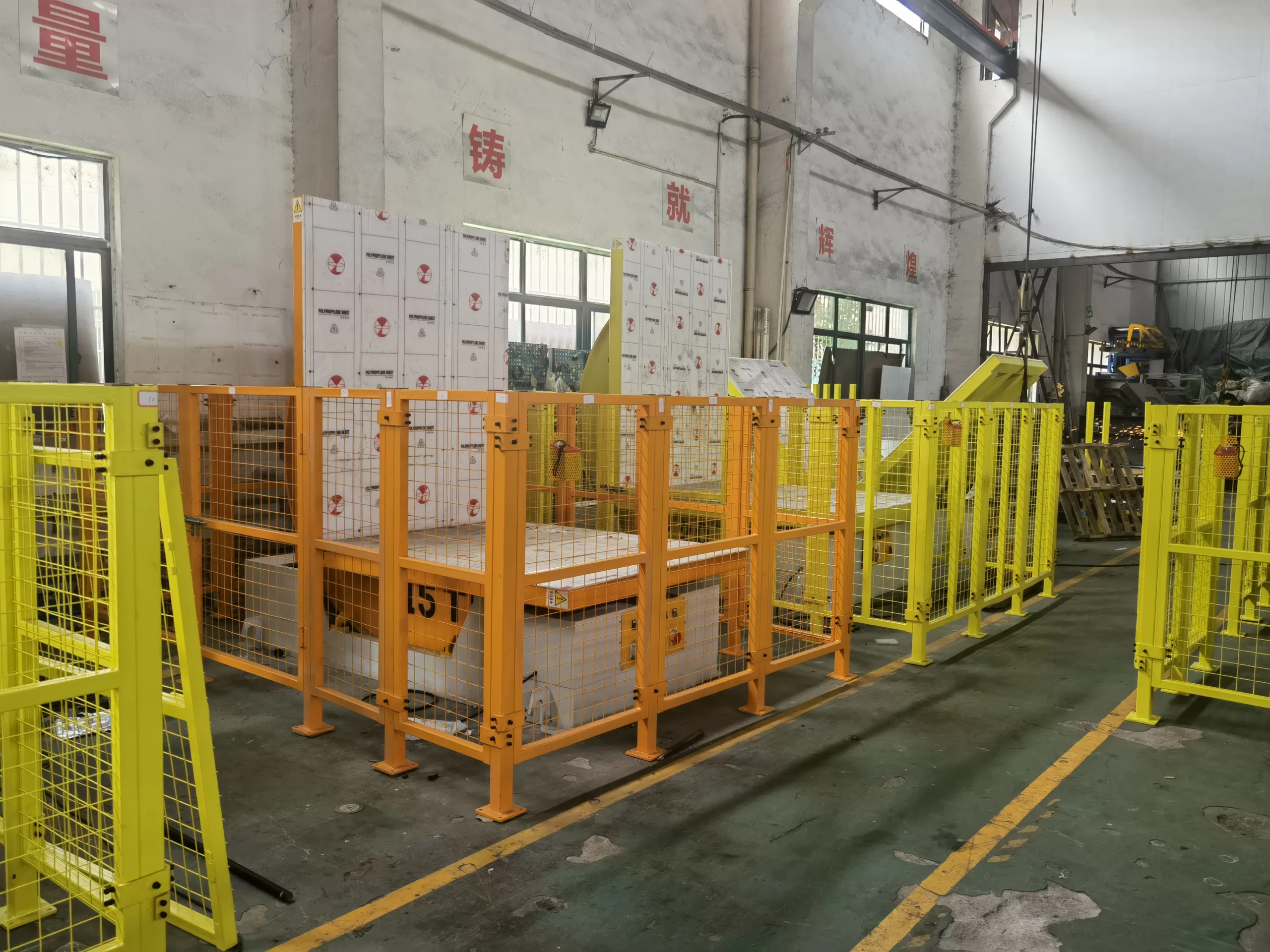
This isn't about bureaucracy; it's about discipline. Making this a rigid, documented part of the process removes individual judgment and ensures that the machine's health is verified before it's ever put under load. It’s the cheapest and most effective insurance policy you can have for your equipment and your team.
Building the Ultimate Daily Checklist
A checklist is only effective if it's practical and easy to use. It should be a simple-to-follow list that the operator can physically sign off on each day. This creates accountability. Here is a basic template that you can adapt for your specific machine.
| Check Category | Item to Inspect | Condition (OK / Not OK) | Notes / Action Required |
|---|---|---|---|
| Mechanical | Main frame and welds | Check for cracks, deformation, or stress marks. | |
| Chains, gears, and drive systems | Check for proper tension, lubrication, and visible wear. | ||
| Fasteners (bolts, nuts) | Visually check for any loose or missing bolts. | ||
| Worktable surface | Check for damage, debris, or oil spills. | ||
| Hydraulic | Hydraulic fluid level | Check level in the reservoir. Must be within min/max marks. | |
| Hoses and fittings | Visually inspect for leaks, cracks, bulges, or abrasions. | ||
| Pressure gauge | Check if pressure is at the normal operating level when idle. | ||
| Electrical & Safety | Emergency Stop buttons | Physically press each E-stop to confirm it halts the machine. | |
| Safety sensors/light curtains | Test functionality (e.g., break the beam to ensure it stops motion). | ||
| Control panel indicators | Ensure all lights and displays are working correctly. | ||
| Warning alarms/beacons | Test audible and visual alarms. |
The "Lockout-Tagout" (LOTO) Golden Rule
The daily check is not just about looking. If a problem is found, the next step is critical. The machine must be taken out of service immediately using a formal Lockout-Tagout (LOTO) procedure. This is non-negotiable. An operator who finds a hydraulic leak must have the authority and responsibility to immediately lock the machine's power source and attach a tag that clearly states "DO NOT OPERATE." This prevents another worker on another shift from unknowingly starting a faulty machine. I've seen situations where a simple note was left, which was then lost or ignored, leading to disaster. LOTO is the industry-standard procedure that saves lives, and it must be a core part of your safety protocol in Vietnam and anywhere else in the world.
How can we build a long-term safety culture beyond basic training?
You've completed a fantastic initial training program. Your operators are certified, and they follow the daily checklists. But what happens six months or a year from now? Complacency is a natural human tendency, and it's the biggest enemy of long-term safety. Without continuous reinforcement, standards begin to slip, shortcuts are taken, and the safety-first mindset erodes. A culture where "just this once" becomes a common phrase is a culture where a serious incident is not a matter of if, but when. The initial investment in training is completely wasted if it isn't nurtured and sustained. Building a true safety culture means making it a living, breathing part of your daily operations, not just a one-time event.
Building a long-term safety culture involves moving beyond initial training to continuous reinforcement and empowerment. This is achieved through regular refresher courses, establishing a near-miss reporting system without blame, and empowering operators to stop production if they identify a safety concern, making safety a shared responsibility from the factory floor to the CEO's office.
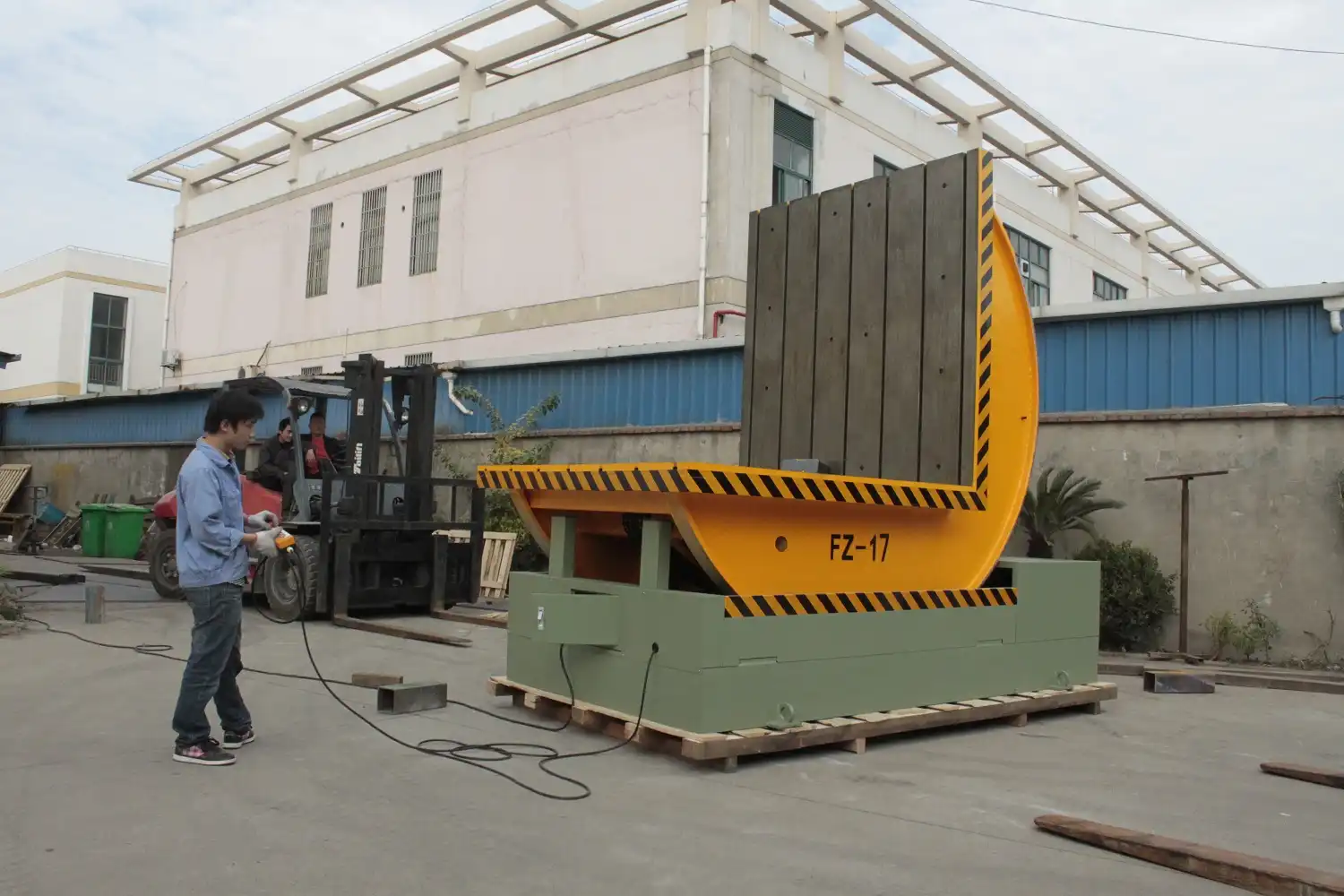
A safety poster on the wall is not a safety culture. A true culture is visible in the actions of every single person in the facility, every single day. It's an ongoing commitment that requires active participation from everyone, especially leadership.
From One-Time Event to Continuous Process
Safety knowledge has a half-life. It degrades over time if not used and reinforced. To combat this, you need to treat safety training as a continuous process, not a single event.
- Scheduled Refresher Training: At least annually, bring operators back into a classroom and practical setting to review core safety procedures, discuss any incidents or near-misses from the past year, and introduce any new protocols.
- Regular Safety Drills: Don't wait for a real emergency to test your response. Run scheduled drills for events like a hydraulic fluid spill, a power failure during a flip, or a medical emergency near the machine. This keeps emergency responses sharp and reveals weaknesses in your procedures.
- Daily Safety Huddles: A quick, 5-minute meeting at the start of each shift can be incredibly powerful. Discuss any safety concerns from the previous shift, highlight a "safety tip of the day," and give operators a platform to voice concerns before work begins.
The Power of "No-Blame" Near-Miss Reporting
This is one of the most critical elements, and it's where many companies fail. You want to know about the small problems before they become big ones. A "near miss" is an event that didn't result in injury or damage, but could have. For example, a mold shifting slightly because it was loaded improperly, but was corrected in time.
Operators will only report these events if they feel safe doing so. If they fear being blamed or punished, they will hide them. You must create a "no-blame" reporting system where the focus is on fixing the process, not blaming the person. When an operator reports a near miss, they should be thanked for their vigilance. This data is pure gold. It allows you to identify hidden risks in your operations—whether it's a need for better training, a flaw in the equipment, or a confusing procedure—and fix them before they cause a real accident.
Leadership's Visible Commitment
Your operators will only take safety as seriously as you do. As a CEO, owner, or manager, your actions speak louder than any memo.
- Walk the Floor: Regularly walk through the production area. Talk to operators about safety. Ask them what their biggest concerns are.
- Invest in Safety: When an operator points out a valid safety issue, invest the money to fix it promptly. This shows you are serious.
- Celebrate Safety: Publicly recognize individuals or teams who demonstrate outstanding safety practices. Make safety heroes out of your most vigilant employees.
This visible, unwavering commitment from the top is what transforms a set of rules into a deeply ingrained culture.
My Insights: How does linking operator training to business goals create a win-win for everyone?
As a business owner, whether you're running a steel mill in Mexico like my client Javier or a manufacturing plant in Vietnam, it's easy to view training as a mandatory expense—a box you have to check for compliance, a cost on the balance sheet. But when you look at it through this narrow lens, you miss the incredible strategic opportunity it presents. You are constantly fighting against challenges like volatile energy costs, the inefficiency of aging equipment, and market pressures on your profit margins. What if I told you that investing in world-class operator training is one of your most effective weapons against these exact problems? By connecting training directly to business outcomes, you transform it from a simple cost into a powerful driver of productivity, efficiency, and profitability. This is the strategic shift I made in my own business, and it's the core of the advice I share today.
Linking operator training to business goals creates a powerful win-win by directly translating safety and efficiency into financial metrics. Well-trained operators cause fewer accidents, leading to higher equipment uptime and lower maintenance costs. Their precise handling reduces energy waste and material scrap, directly impacting your goals of lowering unit costs and increasing overall profit margins.
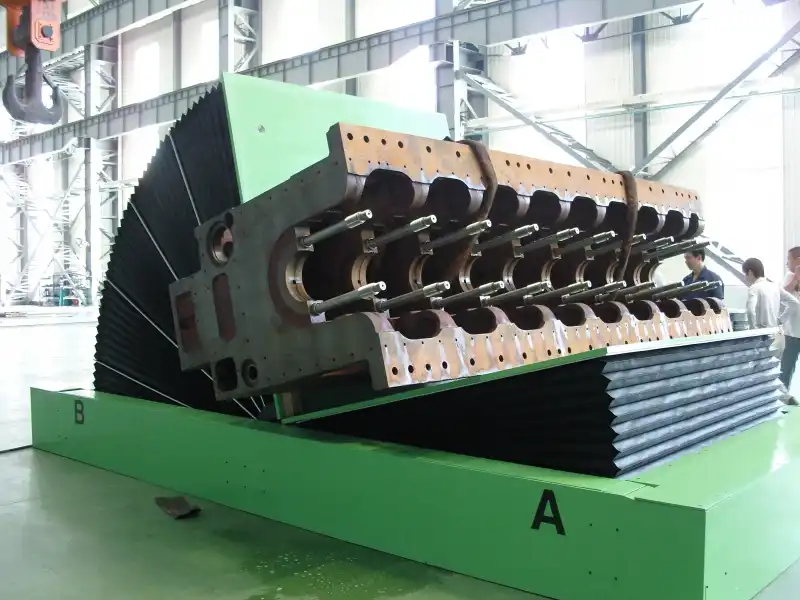
This isn't just about feeling good about safety. It’s about hard numbers. It’s about making your entire operation more resilient, more efficient, and more profitable. When your operators understand how their actions impact the company's success, they become partners in that success.
Quantifying the Return on Investment (ROI) of Training
For a CEO like Javier, every investment needs to show a return. Training is no different. The key is to measure the right things and connect the dots between the training program and your key performance indicators (KPIs). Instead of seeing training as just preventing accidents, see it as improving performance across the board.
| Training Focus Area | Direct Impact on Business Goal | How We Measure It (KPI) |
|---|---|---|
| Precise Load Handling & Operation | Lower Unit Energy Consumption | Reduction in kWh per machine cycle. Fewer corrective movements means less energy wasted. |
| Daily Checks & Proactive Reporting | Improve Capacity Utilization | Increase in Overall Equipment Effectiveness (OEE). Fewer breakdowns means more uptime (targeting 95% availability). |
| Accident & Damage Prevention | Lower Overall Operating Costs | Reduction in repair costs, insurance premiums, and potential fines. Directly contributes to the 8% cost reduction goal. |
| Efficient & Smooth Workflow | Increase Profitability | Higher throughput (molds flipped per shift). Less scrap material from improper handling. |
The Operator as a Key Player in Your Digital Transformation
In today's industry, we're all pushing for more data and smarter factories. Your operators are on the front lines of this transformation. A well-trained operator does more than just run a machine; they are a human sensor. They can provide context that an IoT sensor cannot. When you train them not just on how to operate the machine but on why certain data points matter, they become active participants in your goal of achieving production visualization. They can help diagnose issues flagged by the MES, validate sensor readings, and provide qualitative feedback that is essential for your data analysis platforms. This elevates their role from simple labor to a skilled, strategic asset that is crucial for your factory's future.
When I was just an engineer on the factory floor, I saw a team that had received advanced training get 15% more output from the exact same wrapping machine as the other shifts. They weren't working harder; they were working smarter. They understood the machine's limits, they minimized waste, and they avoided downtime. When I finally had the chance to start my own factory, SHJLPACK, that was the very first lesson I applied. I invested more in my people than in anything else. I knew that the real magic, the real profit, comes from the perfect harmony between a great machine and a great operator. This is the foundation of my success and the most valuable insight I can offer.
Conclusion
Ultimately, effective training isn't just about safety compliance. It’s about unlocking the full potential of your machinery and your people, turning a cost center into a competitive advantage.




